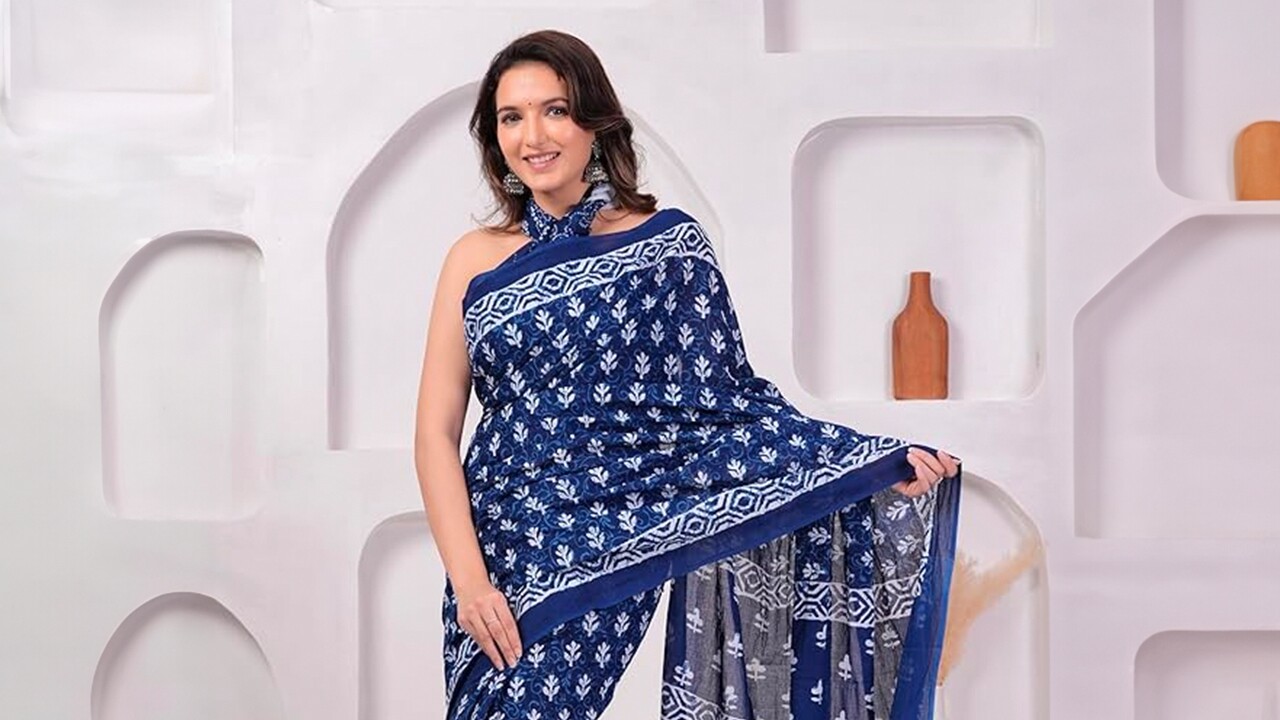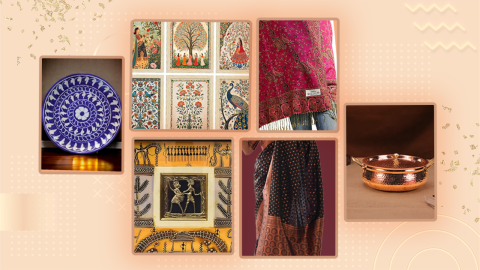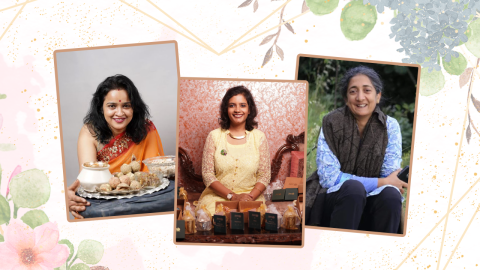Indian women have been draping themselves in sarees for centuries. India's textile heritage tells a nuanced narrative of this iconic garment across the different regions, each with their own unique weaving techniques, colours, and designs which hold stories that often escape the limelight.
Join us as we celebrate India's 78th Independence Day by delving into the lesser-known gems of India’s saree tradition, from the vibrant Bhagalpuri to the intricate Ilkal, and unravel the tales of history, craftsmanship and culture woven into these enduring classics.

Kasavu sarees
The Kasavu saree, a minimalist classic from Kerala, has its roots in royalty. Woven from pure cotton with a gold or zari border, these sarees are symbols of refined elegance and purity. Weavers continue to pride themselves on minimalist creations that speak to an evolved sensibility.
These sarees are handwoven after a meticulous pre-treatment process, and usually come in cream or off-white—an elegant contrast to Kerala's lush biodiversity. Draped in Kerala’s signature Mundu Neriyathu style, the two-piece set consists of the Mundu, worn as the lower garment, and the Neriyathu, or upper part, draped over the shoulder. The Mundu is usually plain, while the Neriyathu carries a golden border for a touch of elegance.
Whether draped traditionally or adapted to modern styling, the Kasavu saree is a cherished symbol of Kerala's textile legacy.
Shop now for Kasavu sarees on Amazon Fashion here.

Ajrakh sarees
Ajrakh is a traditional block-printing method originating from the Sindh region that involves multiple stages of dyeing and printing using hand-carved wooden blocks and locally sourced natural dyes. Artisans meticulously prepare dyes from indigo, pomegranate skins, and madder roots, and go through a process of repeated washing and dyeing to build depth and complexity.
Ajrakh designs feature geometric patterns representing cosmic elements, stylised flora and fauna reflecting the natural surroundings, or intricate symbols conveying stories from mythology. An Ajrakh saree is often used to create a visual narrative, turning it into a wearable piece of art with deep ties to community and history.
Shop now for Ajrakh sarees on Amazon Fashion here.

Kanjivaram sarees
Kanjivaram sarees, made in the town of Kanchipuram in northern Tamil Nadu, are known for their luxurious silk and intricate craftsmanship. They are created using a unique weaving technique with three shuttles. This allows weavers to incorporate a contrast border and pallu seamlessly into the body of the saree.
Kanjivaram sarees are made with heavy silk and pure zari, and exude regal luxury. The designs often depict motifs such as temple architecture or mythological themes, and pair perfectly with simple gold accessories.
Many families in the region look at Kanjivaram sarees as heirloom pieces. To initiate your own tradition, seek out an intricately woven Kanjivaram silk saree and pass it to a daughter or daughter-in-law on a special occasion. Someday, you may witness your grandchildren wearing this cherished piece.
Shop now for Kanjivaram sarees on Amazon Fashion here.

Banarasi sarees
Banarasi sarees originate from Varanasi (Banaras), a city in Uttar Pradesh. These exquisite sarees are known for their intricate weaving, often featuring gold or silver zari work.
Banarasi sarees can be traced back to the period between the 14th and 17th centuries. Mughal emperors played a significant role in promoting and patronising the arts at that time, and their influence is evident in the motifs and patterns of this style of saree. Over the centuries, Banarasi sarees have evolved to become a symbol of cultural amalgamation.
Today, Banarasi sarees have transcended their traditional roots. Designers and fashion enthusiasts are incorporating timeless Banarasi weaves into modern silhouettes and styling. These sarees are not only worn on special occasions but have also made their way onto fashion runways, red carpets, and social events.
Shop now for Banarasi sarees on Amazon Fashion here.

Bhagalpuri sarees
Emerging from Bhagalpur, Bihar, Bhagalpuri sarees are more than mere garments; they embody a riverine culture and legacy. The weaving industry in Bhagalpur on the southern banks of the river Ganga has 30,000 handloom weavers operating 25,000 handlooms.
Bhagalpuri influences extend to sarees made from linen, cotton, and artificial silk. However, the quintessential Bhagalpuri saree is crafted from tussar silk made from wild silkworms feasting on Asan and Arjun trees. These sarees have a rich, textured appearance, with mustard yellow, olive green, rust, and deep maroon hues reflecting the region's natural palette. Traditional motifs, inspired by plants, animals, and abstract patterns, further enhance their cultural moorings. Wearing a Bhagalpuri saree is not just a fashion statement; it's a graceful representation of heritage.
Shop now for Bhagalpuri sarees on Amazon Fashion here.

Kuppadam sarees
Nestled along the Andhra Pradesh coast, Kuppadam village is home to the vivacious Kuppadam saree. Bursting with colour and typically embellished with a shimmering metallic border, Kuppadam sarees are a perfect reflection of Andhra Pradesh's lively spirit, seamlessly blending tradition with cosmopolitan flair.
Their fabrics, crafted by skilled artisans, range from lustrous silk for ceremonies to lightweight, breezy blends for everyday comfort. Motifs feature peacocks, flowers, and regional folklore, making them a versatile wardrobe essential perfect for an evening of cocktails or vibrant weddings.
Kuppadam sarees are worn with pleats neatly tucked into the waist and the loose end gracefully draped over the shoulder, completed with a form-fitting blouse.
Shop now for Kuppadam sarees on Amazon Fashion here.

Ilkal sarees
Ilkal is derived from the word 'Illekallu', translating to the 'slope down the hill'. Ilkal sarees are woven in a valley in northern Karnataka with a distinctive broad pallu, or serigu. The serigu is typically embellished with symbols such as temple towers, fort ramparts, mountain ranges, or local food grains.
Ilkal sarees can also feature intricate kasuti embroidery, a delicate needlework dating back to the Chalukyan period of 6th to 10th century AD. The motifs in kasuti embroidery convey festive themes tied to regional celebrations—elephant motifs for Dusshera, for example, or lantern motifs to represent Deepavali.
Look for Ilkal sarees in the enchanting Giri Kumkum colourway, or opt for the classic elegance of a Chandrakali saree, a black silk adorned with kasuti embroidery.
Shop now for Ilkal sarees on Amazon Fashion here.


















